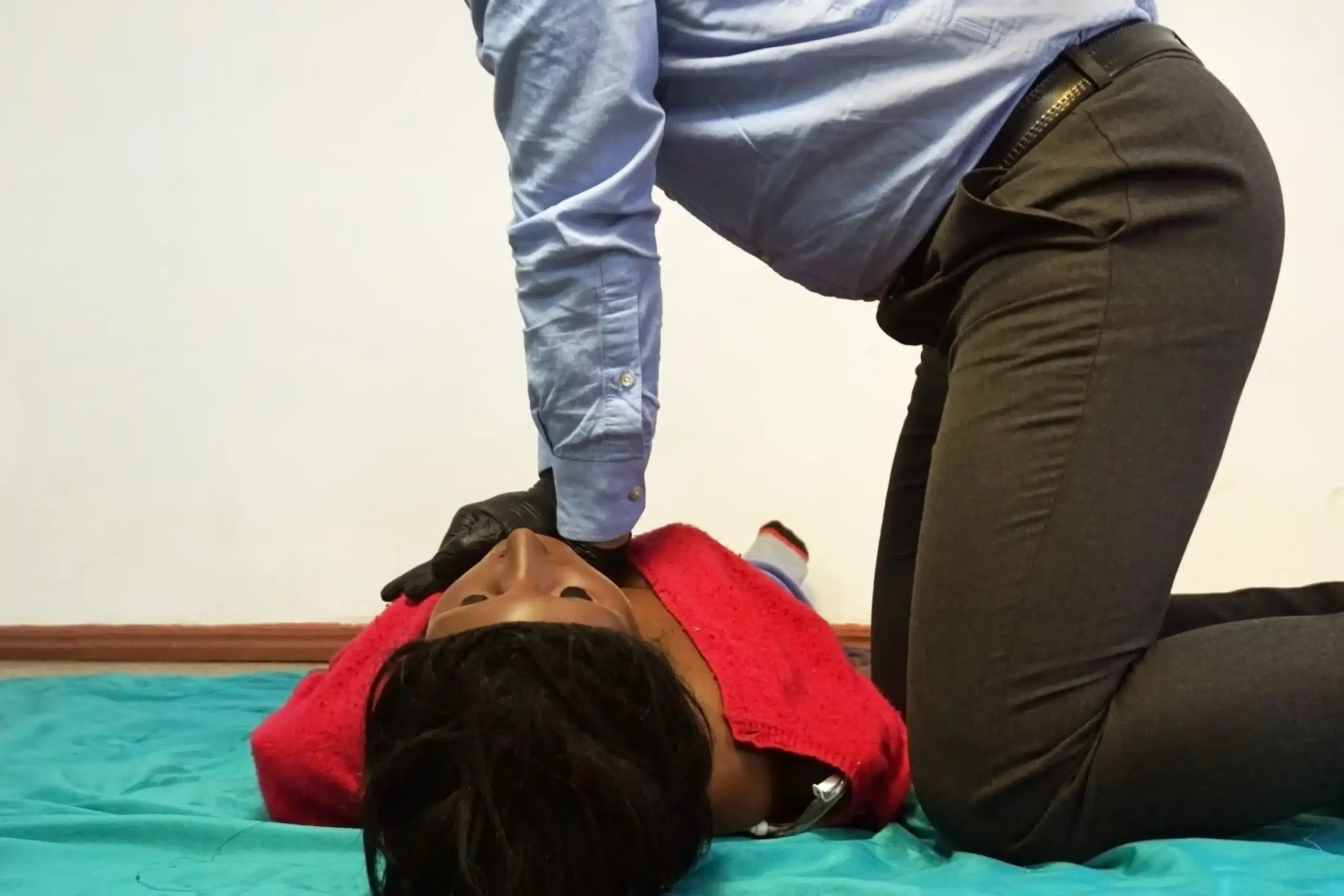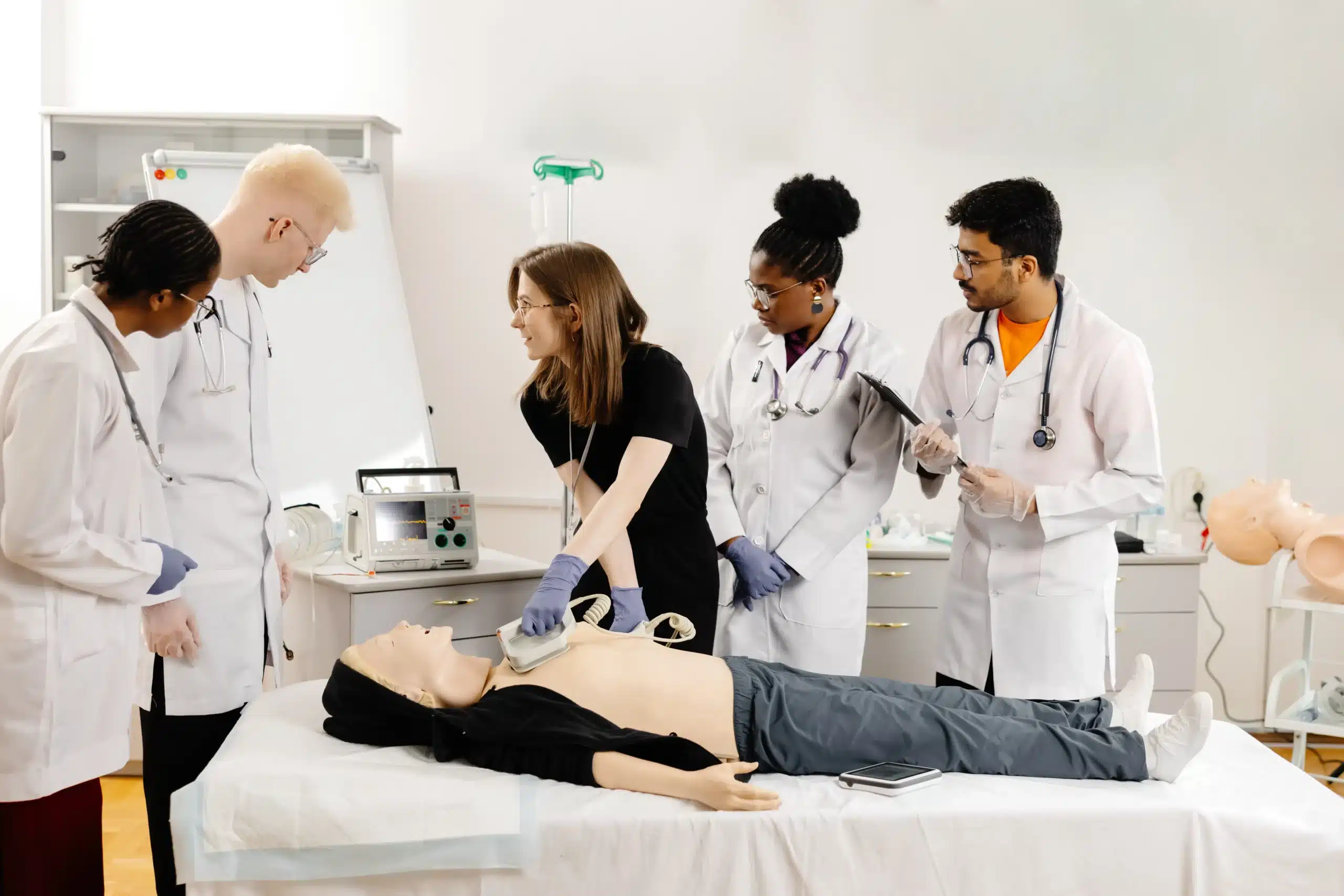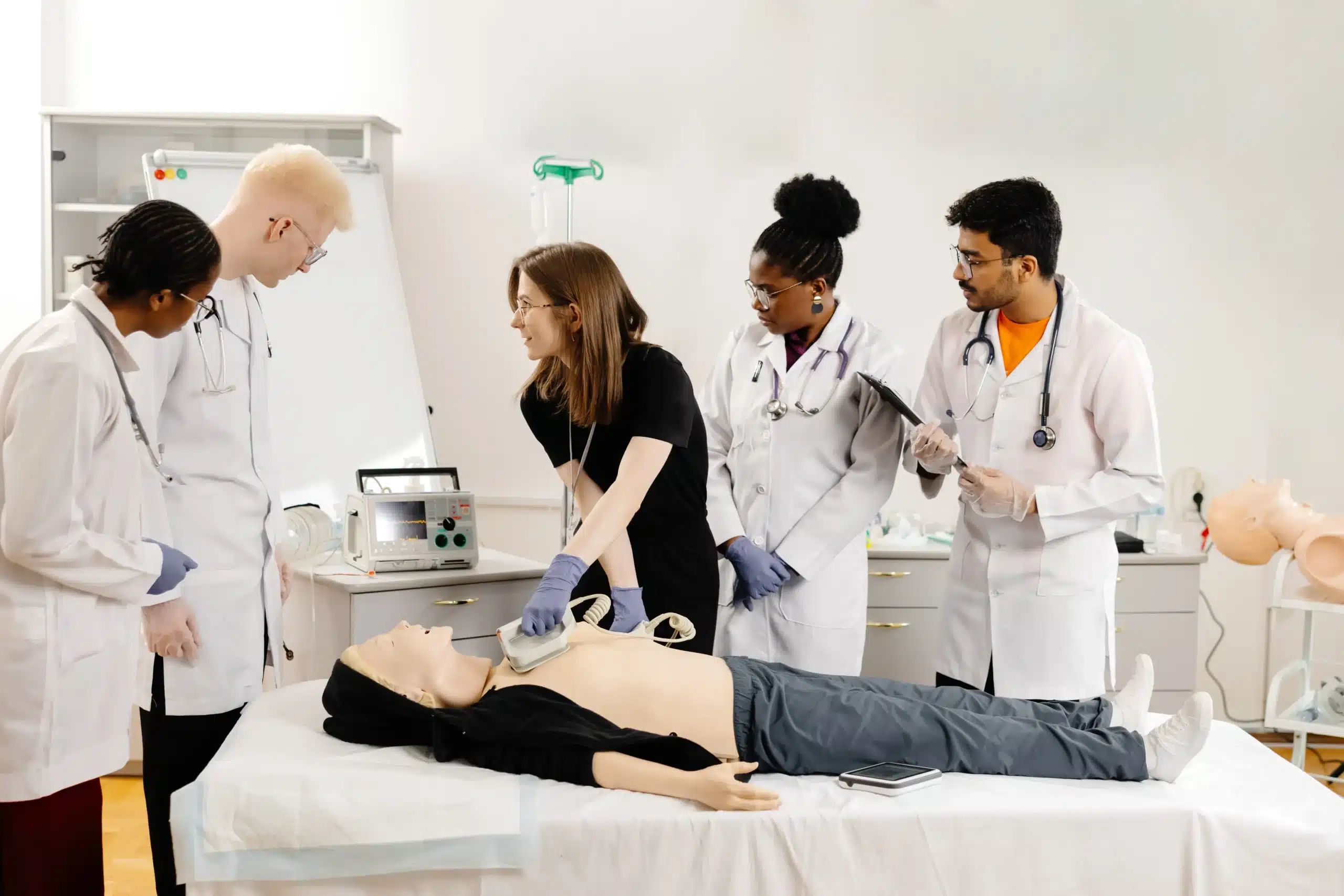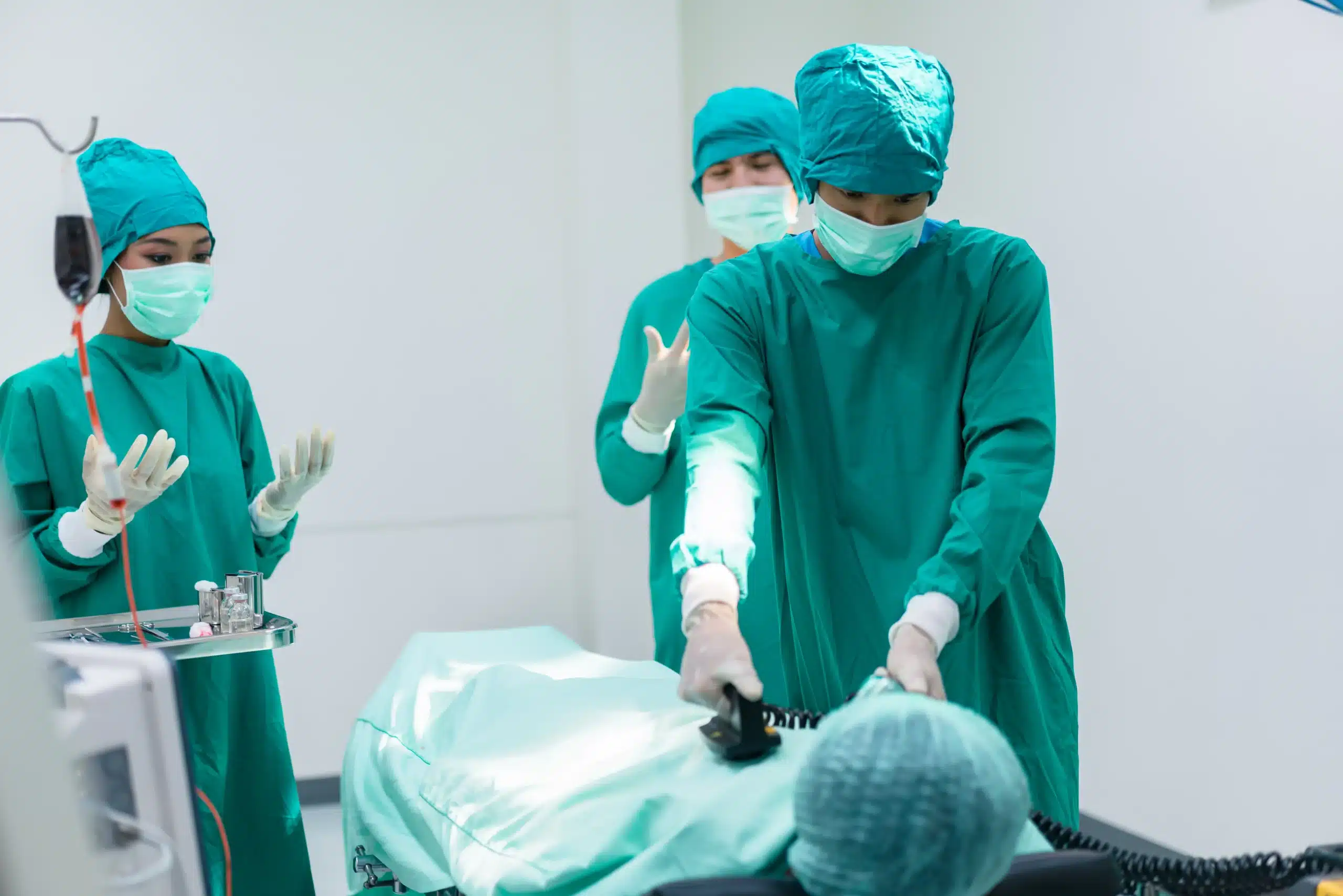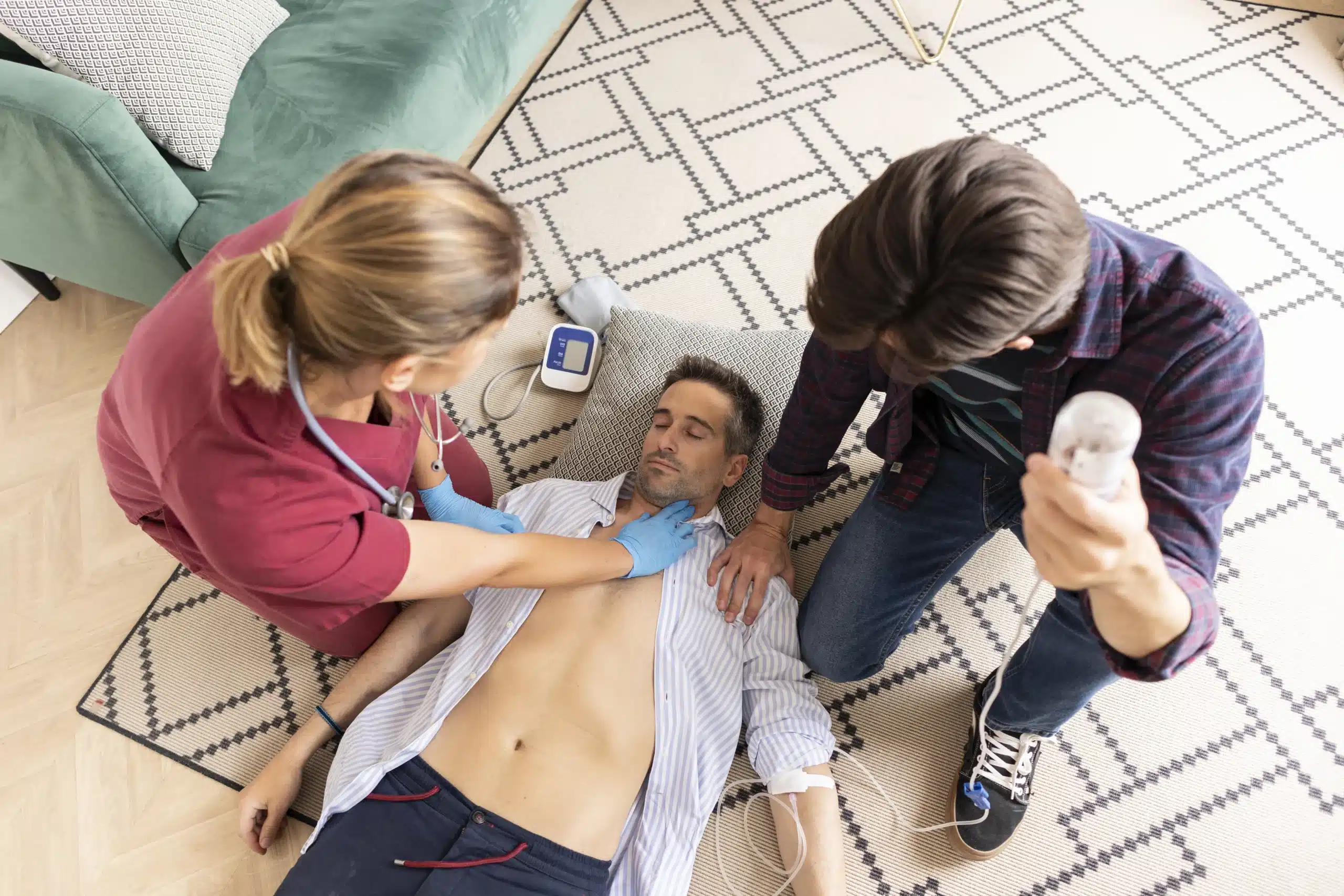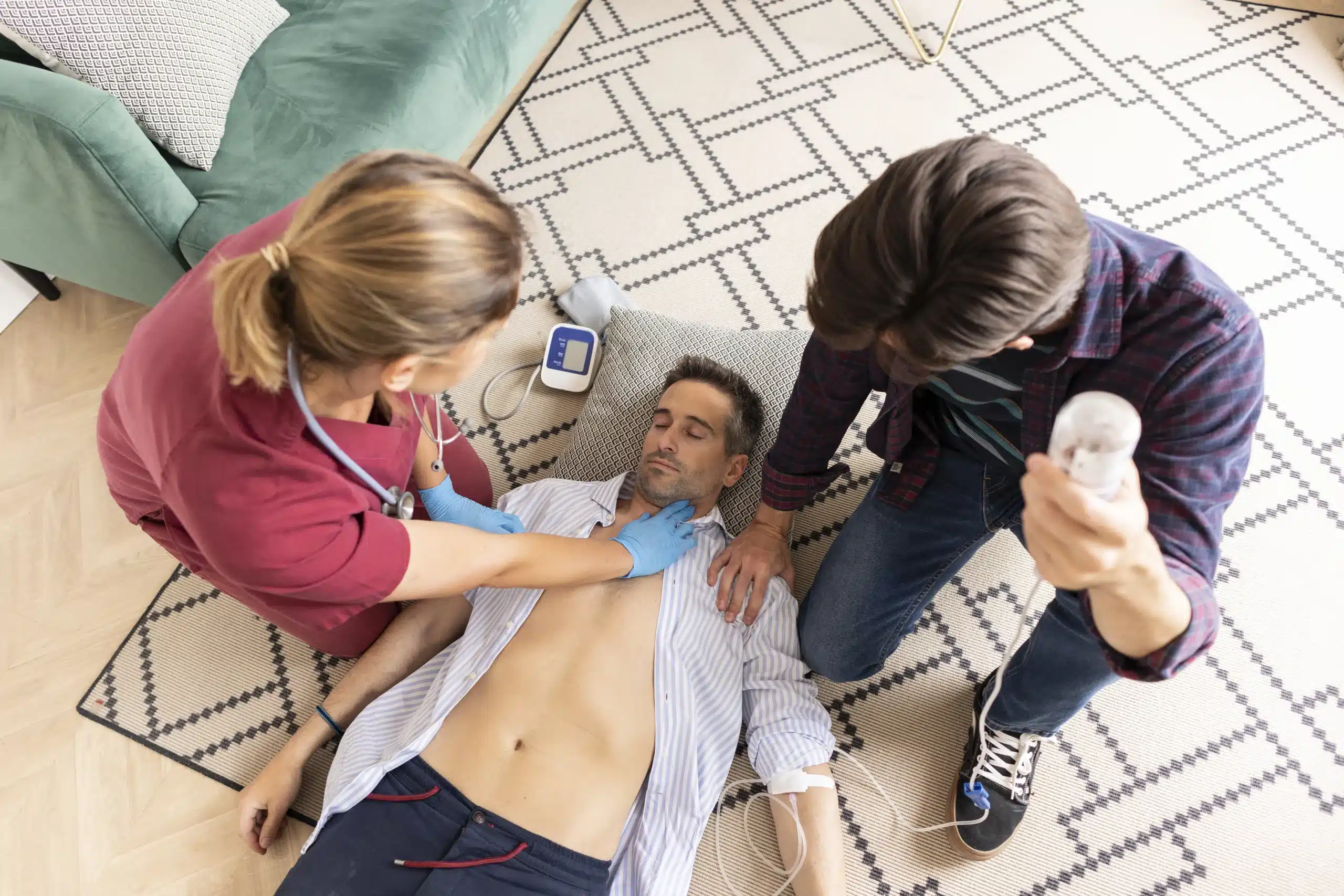Working in healthcare, you know that every second counts in an emergency. Your ability to respond quickly and effectively can make all the difference. BLS recertification is about more than just renewing your credentials; it’s about honing your skills and reinforcing your confidence to provide life-saving care. If your search for “BLS recertification near me” has brought you here, you’re taking a crucial step towards ensuring you’re always prepared. This guide will walk you through the process of finding the right course, understanding the requirements, and preparing for your recertification. We’ll also discuss the importance of hands-on training and highlight reputable training providers.
Key Takeaways
- Stay current to save lives: BLS recertification ensures you’re equipped with the latest knowledge and techniques in emergency care, empowering you to respond effectively in critical situations.
- Find a course that works for you: Explore the various BLS recertification formats—online, in-person, and hybrid—to choose the best fit for your schedule and learning preferences. Prioritize accredited providers with a strong track record.
- Prepare to succeed: Maximize your learning experience by reviewing course materials and practicing key skills beforehand. This preparation will boost your confidence and reinforce your commitment to providing excellent care.
What is BLS Recertification?
BLS recertification is how healthcare providers renew their Basic Life Support skills and knowledge. It’s how you maintain your qualifications to perform CPR and other lifesaving techniques. BLS credentials typically expire every two years. Recertification ensures you stay up-to-date with the latest guidelines and best practices from organizations like the American Heart Association. You can find BLS renewal courses online and in person, making it convenient to fit recertification into your schedule. You often have a 30-day grace period after expiration to recertify.
How Recertification Differs from Initial Certification
The primary difference between initial BLS certification and recertification is your level of experience. Initial certification courses cover the fundamentals, while recertification courses build on that foundation. The focus is on refreshing existing skills and learning updated procedures. You’ll need a current BLS certification—or one that’s expired within the past 30 days—to take a recertification course.
Why Stay Current?
Staying current with your BLS recertification is crucial. For healthcare professionals, it’s essential to keep up with evolving research and guidelines for emergency care. Maintaining your BLS certification demonstrates your commitment to providing high-quality patient care. Most importantly, BLS equips you with the skills to respond effectively in critical situations, potentially saving lives.
Find BLS Recertification Near You
Finding the right BLS recertification course doesn’t have to be a headache. Here are a few simple ways to locate a class that fits your schedule and learning style:
Search Online
Start with a simple online search. Use keywords like “BLS recertification near me” or “BLS renewal courses” plus your city or region. Look for providers with a strong reputation and positive student feedback. A typical BLS recertification course covers core concepts like high-quality CPR for adults, children, and infants, along with techniques for relieving choking and using an AED. Reading reviews from other students can give you valuable insights into the quality of instruction and the overall learning experience. Many training centers collect student feedback through surveys, asking about course materials, instructional effectiveness, and overall satisfaction.
Check Local Healthcare Institutions
Hospitals, clinics, and other healthcare facilities often offer BLS recertification courses for their staff and the wider community. Check the websites of hospitals in your area or contact their education departments for information on upcoming classes. You might also want to reach out to local fire departments or EMS agencies, as they frequently provide CPR and BLS training.
Tap into Professional Networks
Word-of-mouth can be incredibly helpful. Ask your colleagues, mentors, or other healthcare professionals for recommendations on BLS recertification providers. Professional organizations or associations related to your field might also have resources or partnerships with training centers. Contact us to learn more about our courses. BLS recertification courses come in several formats, each with its own advantages for different learning styles and schedules. Consider what works best for you before registering.
Top BLS Recertification Providers
Finding the right BLS recertification provider is key to a smooth and valuable learning experience. Here’s a rundown of some reputable options:
American Heart Association (AHA)
The American Heart Association sets the standard for CPR and emergency cardiovascular care. Their BLS course trains participants to quickly recognize life-threatening emergencies, give high-quality chest compressions, deliver appropriate ventilations, and provide early use of an AED. The AHA offers various courses, including options for healthcare providers and other professionals.
American Red Cross
The American Red Cross is another well-respected provider of BLS recertification. With classes available online and in person, they offer flexibility for busy schedules. The Red Cross focuses on providing practical skills and knowledge so you can confidently respond to emergencies.
Fairfield CPR Classes
Fairfield CPR Classes offers a range of American Heart Association (AHA) courses, including BLS, ACLS, and PALS, with an emphasis on hands-on learning. Serving Fairfield, Vacaville, and Suisun City, they prioritize excellent customer service and offer daily classes for convenient scheduling. Check out their low price guarantee and group discounts.
National Safety Council
The National Safety Council partners with training centers across the country to deliver AHA-authorized BLS recertification courses. Safety Training Seminars, for example, provides high-quality AHA training with various scheduling options.
ProTrainings
ProTrainings offers online and blended learning options for BLS certification and recertification. Their focus on flexibility and convenience makes them a popular choice for healthcare professionals with demanding schedules. They offer several different learning formats to suit individual needs.
Health & Safety Institute (HSI)
Health & Safety Institute (HSI) provides comprehensive training solutions, including BLS recertification, for healthcare professionals. They offer various learning resources and tools to support ongoing professional development. HSI is known for its high-quality training materials and experienced instructors.
Local Community Colleges
Many local community colleges offer BLS recertification courses, often at competitive prices. These courses typically provide a solid foundation in BLS skills and are taught by qualified instructors. Check with colleges in your area for course availability and schedules.
Choose the Right BLS Recertification Course
Finding the right BLS recertification course involves several key considerations. Taking the time to research and compare options will ensure you receive high-quality training that meets your needs and prepares you to provide care confidently.
Check Accreditation and Recognition
A reputable training provider should offer courses accredited by a recognized organization like the American Heart Association (AHA). Look for providers with a strong reputation and positive student feedback, similar to the recommendations from Santa Rosa CPR. This ensures the course content aligns with current industry standards. Fairfield CPR Classes is a woman-owned AHA Training Center, offering the assurance of quality and recognized certification.
Consider Course Format and Duration
When selecting a recertification course, think about the format and duration that best suits your schedule and learning style. As Antioch CPR Classes points out, various options cater to different preferences. Online courses offer flexibility, while in-person classes provide hands-on practice and direct interaction with instructors. Consider a blended learning approach if that suits you best. Fairfield CPR Classes offers a range of course formats to accommodate busy schedules.
Evaluate Instructor Qualifications
Experienced and certified instructors are essential for effective BLS training. Instructors should possess current certifications and demonstrate expertise in delivering engaging and informative instruction. Check if the training center collects student feedback, as many do, including Campbell CPR Classes. This feedback offers valuable insights into the quality of instruction.
Look for Hands-on Practice
BLS recertification requires demonstrating proficiency in essential skills. Prioritize courses that emphasize hands-on practice, allowing you to refine your techniques and build confidence. Fairfield CPR Classes emphasizes this practical training, ensuring you’re prepared for real-world scenarios.
Compare Costs and Discounts
Course costs can vary, so compare pricing from different providers. Inquire about potential discounts, especially if you’re renewing with the same provider or registering as part of a group. Fairfield CPR Classes offers group discounts. Check their low price guarantee and don’t hesitate to contact them with any questions.
Read Reviews and Testimonials
Before committing to a course, read reviews and testimonials from previous students. These firsthand accounts provide valuable perspectives on the course content, instructor effectiveness, and overall learning experience. Campbell CPR Classes highlights the importance of student feedback. This research can help you make an informed decision and choose a course that meets your expectations.
BLS Recertification Course Formats
When it comes to renewing your BLS certification, you have several options. Each format has its own advantages, so consider your learning style, schedule, and preferences when making your decision. Here’s a breakdown of the most common BLS recertification course formats: online, in-person, hybrid, and RQI programs.
Online Courses
Online BLS courses offer flexibility and convenience, allowing you to complete the coursework at your own pace, wherever you have internet access. This format is ideal for busy schedules or limited access to in-person training. Online courses typically involve interactive modules, videos, and practice tests. However, they may not offer the same level of hands-on practice as in-person classes.
In-Person Classes
In-person BLS recertification classes provide a structured learning environment with direct interaction with an instructor and other students. This format emphasizes hands-on training and allows you to practice essential skills—like CPR and using an AED—in a realistic setting. Fairfield CPR Classes prioritizes this hands-on approach, building confidence and competence for real-life emergencies. In-person classes also offer immediate feedback and clarification from the instructor.
Hybrid Options
Hybrid BLS recertification courses combine online learning with in-person skills practice. You’ll complete the cognitive portion online, at your own pace, then attend a shorter, in-person session to demonstrate your skills. Fairfield CPR Classes offers more information on their HeartCode BLS CPR Provider courses, a popular hybrid option. This blended approach balances flexibility and hands-on learning.
RQI Programs
The American Heart Association’s RQI (Resuscitation Quality Improvement) program offers a unique approach to BLS recertification. RQI uses low-dose, high-frequency training to reinforce skills and improve competency. This program typically involves online modules, simulation practice, and regular skills assessments. RQI is designed to be more efficient and convenient than traditional BLS recertification courses, helping healthcare professionals maintain their skills and stay current with the latest guidelines.
Prerequisites and Eligibility
Before signing up for BLS recertification, it’s helpful to understand the requirements. Knowing the guidelines will ensure a smooth recertification process.
Current Certification Requirements
Generally, to take a BLS renewal course, you must hold a current BLS certification. This confirms you’ve completed the initial training and possess a foundational understanding of life-saving techniques. Both the American Red Cross and the American Heart Association (AHA) offer renewal courses designed to refresh these essential skills. At Fairfield CPR Classes, we also provide AHA-compliant BLS renewal courses.
Expired Certification Considerations
What happens if your certification lapses? Don’t worry, there’s usually a grace period. You can often renew your BLS certification within 30 days of the expiration date. Some providers, like Save A Life CPR, may even allow renewals up to 60 days after expiration. However, renewing before your certification expires is always best to avoid any gaps in your credentials. Contacting your chosen provider directly is a good idea to confirm their specific renewal policy. For questions about our programs, contact us at Fairfield CPR Classes.
Professional-Specific Requirements
BLS certification is vital for many healthcare professionals. It equips individuals with the skills to respond effectively in emergencies. From providing high-quality chest compressions and ventilations to using an AED, BLS training covers a range of life-saving procedures. For example, the AHA’s BLS course emphasizes prompt recognition of life-threatening emergencies and the importance of early intervention. Check with your employer or licensing board to confirm the specific BLS requirements for your profession.
Prepare for Your BLS Recertification
Getting ready for your BLS recertification doesn’t have to be stressful. A little prep work goes a long way. Here’s how to get ready:
Review Course Materials
Many BLS renewal courses include training materials. Take time to review these, which often cover essential techniques and procedures like high-quality CPR for adults, children, and infants, proper AED use, and how to relieve choking. Brushing up on these core concepts will build your confidence for the recertification course. Fairfield CPR Classes offers a range of courses, including CPR and First-Aid certification.
Take Practice Tests
Many BLS renewal courses offer practice tests and simulations. Use these resources to assess your knowledge and identify areas where you might need extra review. Practice tests can build your confidence and ensure you’re fully prepared for the real thing. Contact us to learn more about our practice tests and simulations.
Know What to Expect
A typical BLS recertification course covers core concepts like high-quality CPR for adults, children, and infants, along with techniques for relieving choking and using an AED. Knowing what will be covered can help you focus your study efforts. With BLS recertification classes available online and in person, maintaining your certification is fast, simple, and easy. The American Red Cross offers various BLS renewal and recertification options.
Related Articles
- BLS Classes in Vacaville: Your Complete Guide – Fairfield CPR Classes
- BLS Renewal in Suisun City: Your Complete Guide – Fairfield CPR Classes
- BLS for Healthcare Providers in Fairfield: Complete Guide
- BLS Certification in Fairfield: A Comprehensive Guide
- BLS for Healthcare Providers in Fairfield: Your Guide – Fairfield CPR Classes
Frequently Asked Questions
How long is my BLS certification valid?
BLS certification is typically valid for two years. It’s important to recertify before your certification expires to maintain your credentials and stay up-to-date with the latest guidelines. Often, there’s a 30-day grace period after expiration, but it’s always best to renew promptly.
What if I let my BLS certification expire?
If your BLS certification expires, you’ll need to take a recertification course to renew it. There’s usually a grace period of 30 days after the expiration date during which you can still recertify. However, it’s always recommended to renew before your certification lapses to avoid any gaps in your qualifications. Contact your training provider to confirm their specific policy on expired certifications.
What’s the difference between BLS certification and recertification?
Initial BLS certification courses cover the fundamental skills and knowledge needed to perform CPR and other lifesaving techniques. Recertification courses build upon this foundation, focusing on refreshing your skills and introducing any updated procedures or guidelines. Recertification courses are generally shorter than initial certification courses.
What are my options for taking a BLS recertification course?
You have several options for BLS recertification, including online courses, in-person classes, and blended learning formats that combine online learning with in-person skills practice. Choose the format that best fits your learning style and schedule. Online courses offer flexibility, while in-person classes provide hands-on practice and direct interaction with an instructor.
How do I choose a reputable BLS recertification provider?
Look for a training provider accredited by a recognized organization like the American Heart Association (AHA). Check for positive student reviews and testimonials, and consider factors like instructor qualifications, course format, and cost. Ensure the provider offers hands-on practice and aligns with current industry standards.
